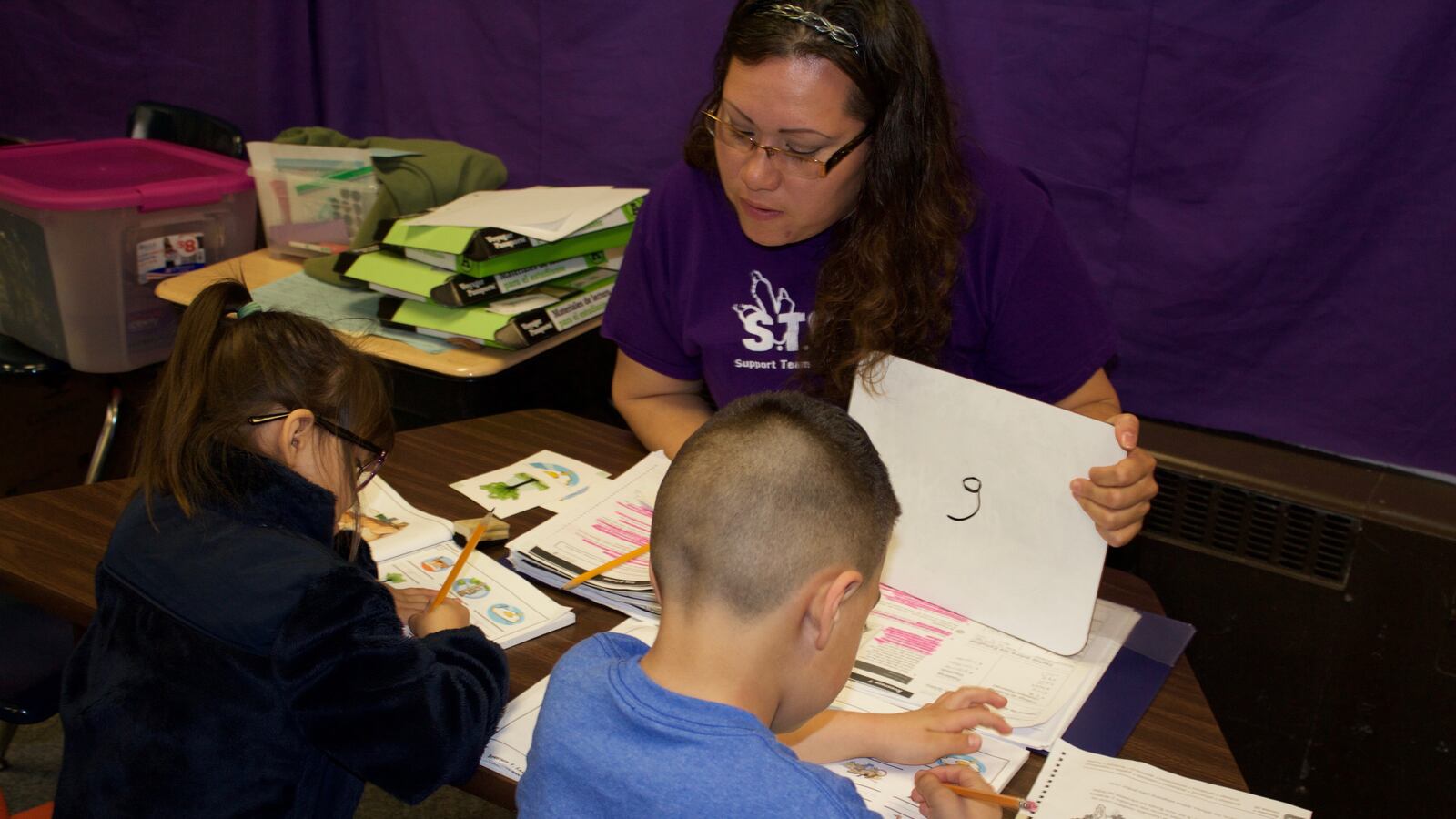Raeann Javier would like to know what she can do to help her second-grader read better. Sometimes, sitting with her daughter, the best she could offer was, “You know how to do this.”
Javier, a single mother, also would love to land another job to earn more for her family.
A pilot program launched by Adams 14 School District in Commerce City may help her with both.
The school district is trying to build more knowledgeable, active parents through classes and volunteer time working with young students struggling to read. For those who are interested, the program also provides parents a path to become paraprofessionals, or teacher’s aides.
The initiative is one way the nearly 8,000-student suburban district — facing state intervention this year after years of poor academic performance — is trying to turn things around.
District surveys found parents were looking for ways to become more supportive.
Javier, one of 17 mothers in the program, said she already feels like she has become a more patient parent less than a month in. She also is interested in becoming a paraprofessional to supplement the income she earns as an at-home nurse.
“It’s a little bit tough. I make it work,” Javier said. “But this would really, really help.”
Other parents taking part in the pilot program already were volunteers at their kids’ schools.
“They usually just did the normal things like helping with copying or sorting papers,” said Jesse Martinez, Adams 14’s director for family and community engagement. “But we really wanted to change that dynamic. We wanted to pull in our parents to tap their potential and bring them in to support their children.”
One of the parent volunteers, Susana Torres, was an elementary school teacher for 10 years before coming to the United States. Now with three children in district schools, Torres jumped at the opportunity to get back into a classroom.
“This is my thing,” Torres said. “I love the program.”
Torres also helps other Spanish-speaking moms who are part of the program. She said that even though they don’t have the teaching background she does, the program has made it easy for all of them to learn to help kids. “All you need is a passion to make change,” she said.
Pat Almeida, the principal of Dupont Elementary, where the program is being piloted, said the goal is also to help more students become proficient in reading before third grade — especially those who are not far behind but just need a boost to get to grade level.
“We’re able to give them more repetition so they can apply that to their reading,” Almeida said. “If they’re able to have more repetition, their progress is going to be accelerated.”
Dupont Elementary is among the Adams 14 schools that is struggling, though the school isn’t yet facing sanctions like the district as a whole is this year.
District officials have been working on setting up reforms all year to present to the state as a suggestion for their corrective action, including getting help from an outside company for developing curriculum and testing. Increasing parental engagement through this and other new efforts, like having teachers visit families at home, are part of the work to improve the district.
The parent-to-para program is being funded with money from the Denver-based Rose Community Foundation (Rose also supports Chalkbeat) and Climb Higher Colorado, a coalition of advocacy groups that support strong academic standards and tests.
At Dupont, while the parent volunteers work with almost 75 students that they pull out of class for about an hour, teachers can spend the time in class working with students who need the most help.
An instructional coach supervises the moms to work with groups of two to six students and helps them plan lessons each day for kids.
During one lesson this week, parents were helping kindergarteners learn how to differentiate between capital and lowercase letters and how to sound out words. Some students were still having trouble identifying letters, while one boy was writing words so quickly he was standing up, moving around and at one point fell.
The volunteers said it’s rewarding to see the kids catching on.
“Knowing that just a little bit of our time can help them is a good feeling,” said volunteer Adelaida Guerrero. “It’s an excellent opportunity for them and for us.”
For Maria Rodriguez, the program has unexpectedly given her another benefit — bringing her closer to her teenage daughters. She said she joined the program because when a bilingual program for her two oldest daughters was removed seven years ago, she had stopped being able to help them on their school work.
When Rodriguez heard about the program, she thought she could prepare to help her younger children, a second and third grader, before they too required more help than she could offer.
“It’s brilliant,”Rodriguez said. “I’ve been helping them work on their vowels.”
Within the last week, the two older girls came to Rodriguez complaining that she hadn’t ever worked to help them in the same way, and asking to join in during the at-home lessons. Over time, the girls had kept their ability to speak Spanish, but never learned how to write it. Now they were asking to learn alongside their younger siblings.
“They have that apathy of adolescence that makes them not always want to get close to us as parents,” Rodriguez said, tearing up as she recalled the moment. “I honestly felt really good.”

